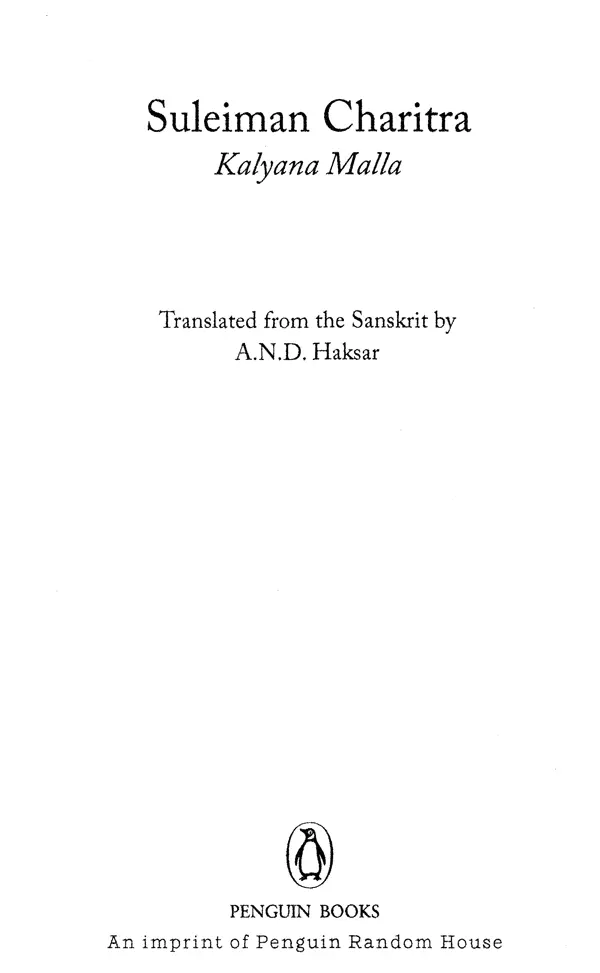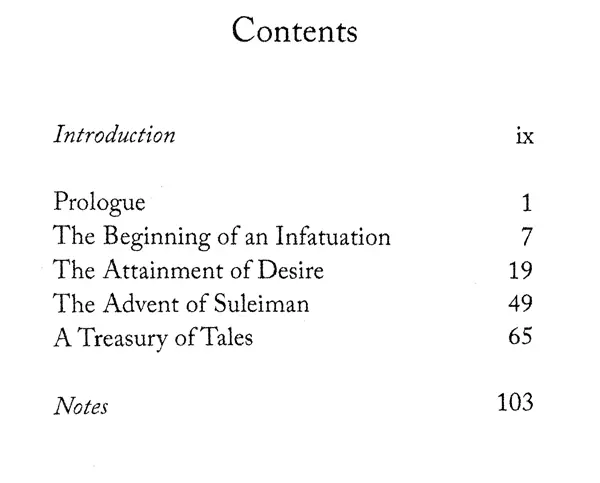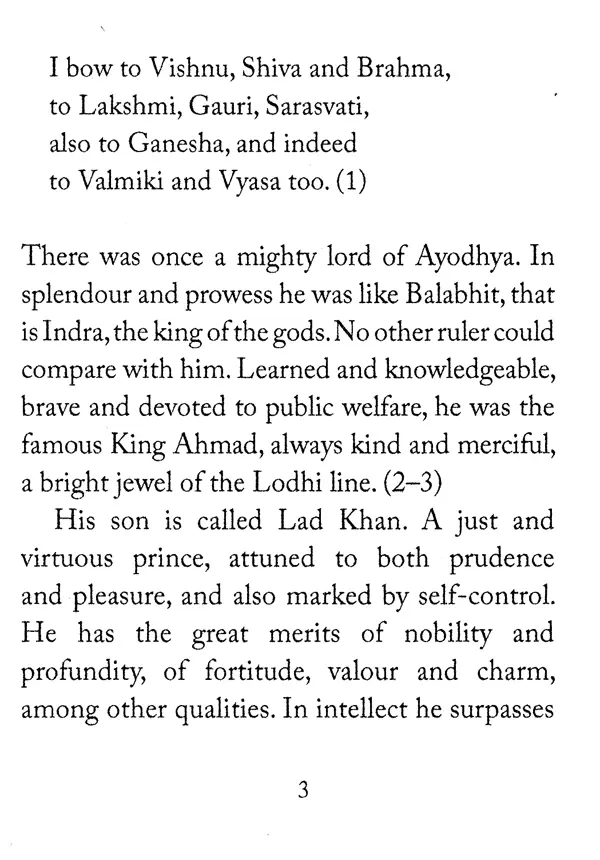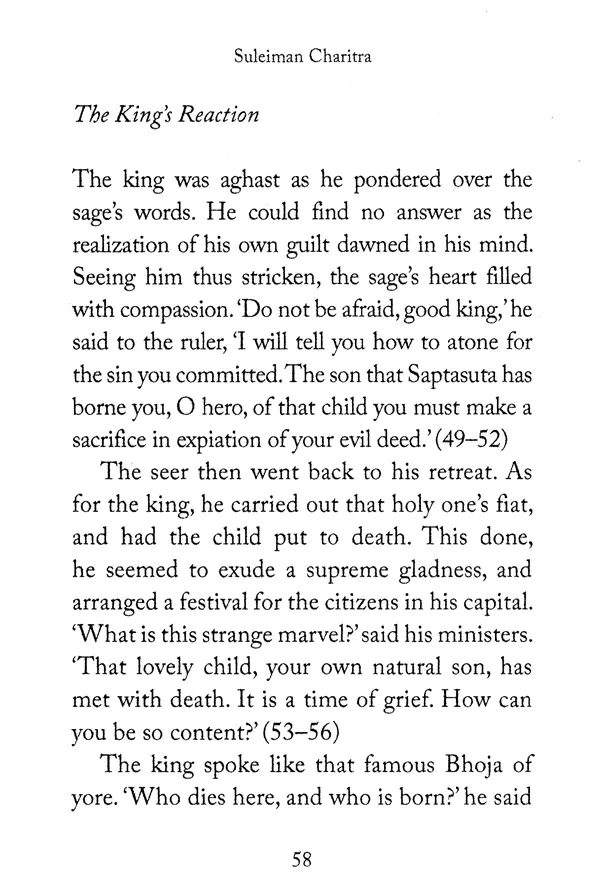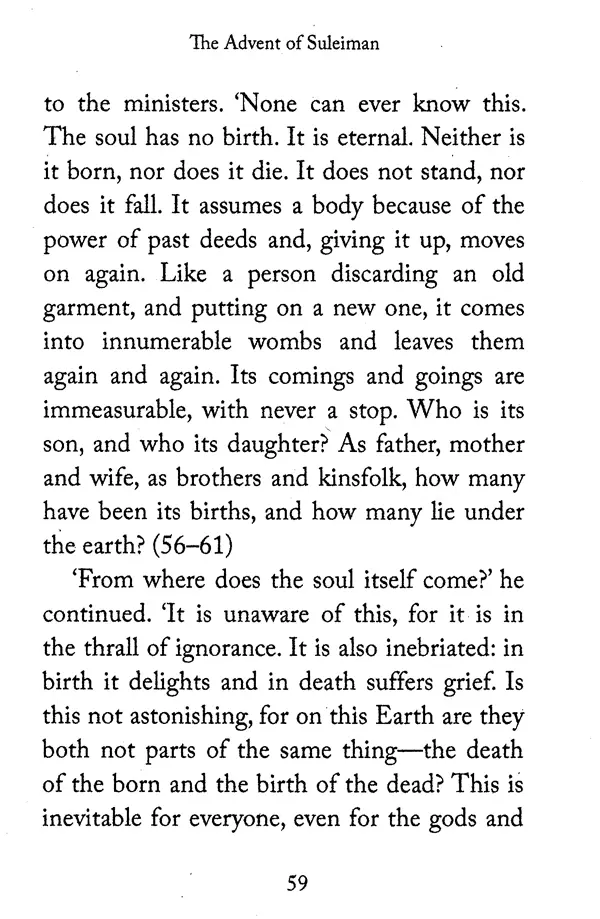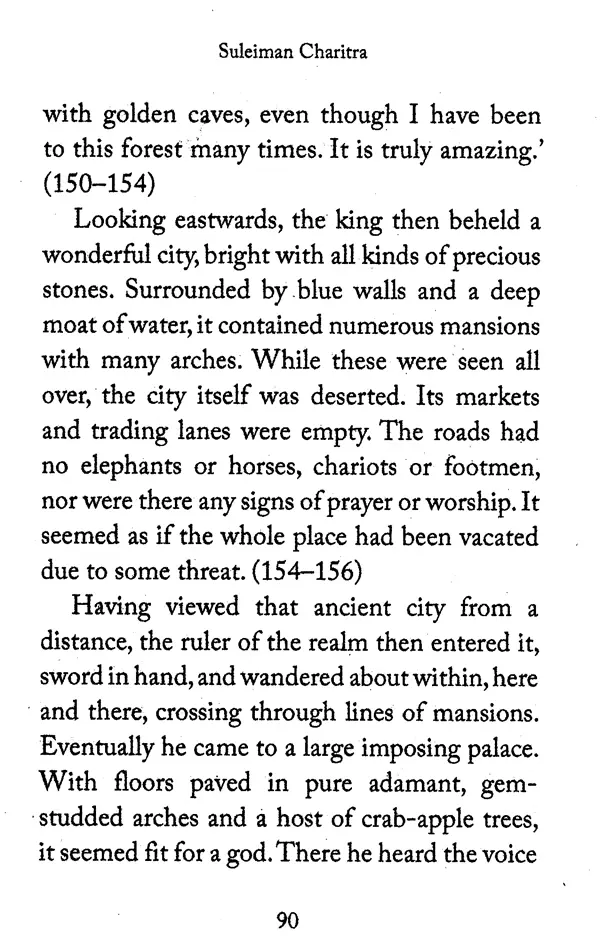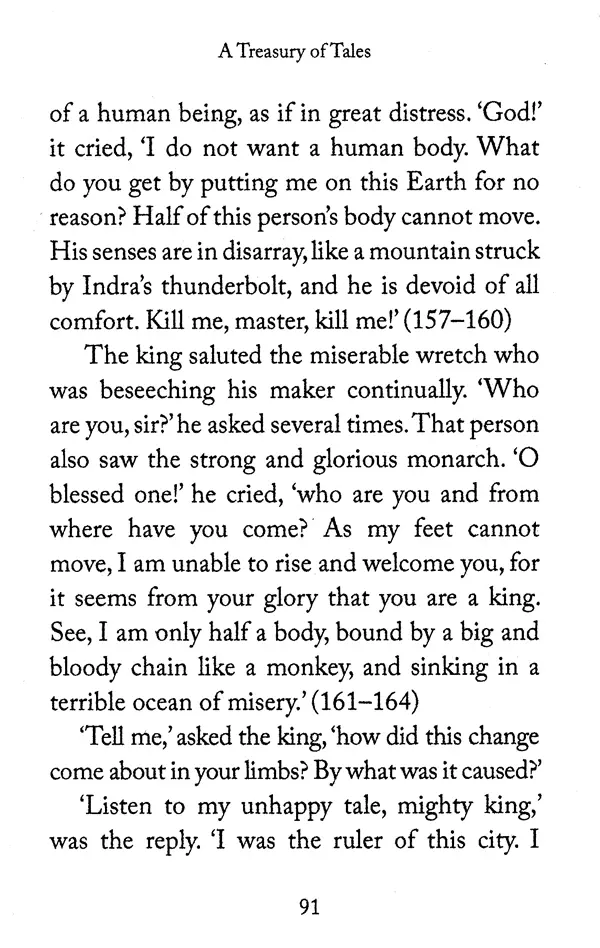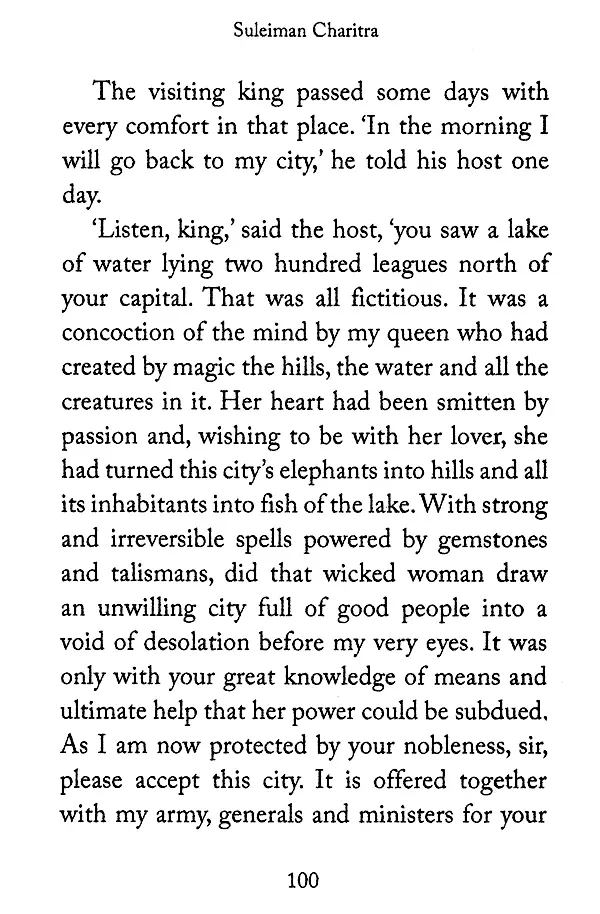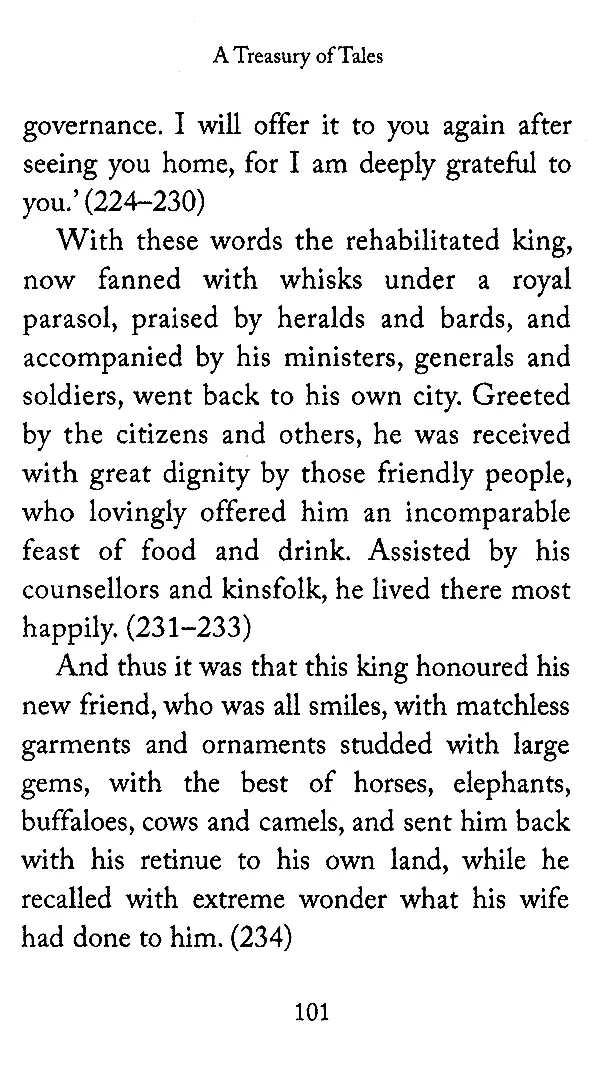
Suleiman Charitra- Kalyana Malla
Book Specification
| Item Code: | UAW970 |
| Author: | Kalyana Malla,A.N.D. Haksar |
| Publisher: | Penguin Random House India Pvt. Ltd. |
| Language: | English |
| Edition: | 2015 |
| ISBN: | 9780143420590 |
| Pages: | 132 |
| Cover: | PAPERBACK |
| Other Details | 8.00 X 5.00 inch |
| Weight | 120 gm |
Book Description
A Hindu poet, Kalyana Malla, renders in classical Sanskrit a biblical story for his Muslim patron, a Lodhi prince of the sixteenth century, in this unusual intermingling of cultural traditions. The sensual unfolding of David and Bathsheba's love story-the bathing scene, David's infatuation, his pursuit of Bathsheba, and their eventual union-is strikingly portrayed in the language of the gods through its shringara rasa, or the erotic mode, by a writer better known for the celebrated treatise on sex Ananga Ranga.
This marvellous, first-ever English translation of Suleiman Charitra -a delightful Sanskrit rendering of Hebraic and Arabic tales elegantly brings together the East and the West.
Suleiman Charitra by Kalyana Malla was composed in classical Sanskrit about 500 years ago. It comprises a celebrated love story of Judaic and Biblical origin narrated in three chapters, followed by a set of dramatic tales drawn from the Arabian Nights in the fourth. These contents, somewhat unusual in the literature of India's ancient language, are presented here with its typical literary flair of idiom and embellishment, setting and style. All this adds special interest to a remarkable work. However, despite having been in existence for half a millennium, it has remained practically unknown to most readers in modern times. Its relative obscurity extends, with some exceptions, even to the academic domain. Standard histories of Sanskrit literature make no mention of this compilation, nor has it been previously translated, as far as known, into English or any other language to bring it into the mainstream of general reading today.
This is one reason for the present translation. Another is the work's readability and obvious potential of appeal and enjoyment for a modern audience. It is also worthy of further exposure on a few other grounds. First, it is a fine reminder of how Sanskrit writing continued to flourish in what many scholars have called the medieval or Muslim period of Indian history. Second, a comparatively rare instance in that writing is the derivation of this work's source material from traditions originating in the Hebrew and the Arabic world, as already mentioned. Third, also exceptional, is the presentation of this material obtained from an external source in a language, and with the ornamentation, particular to the world of Sanskrit literature, especially its shringara or erotic aspect.
Book's Contents and Sample Pages
